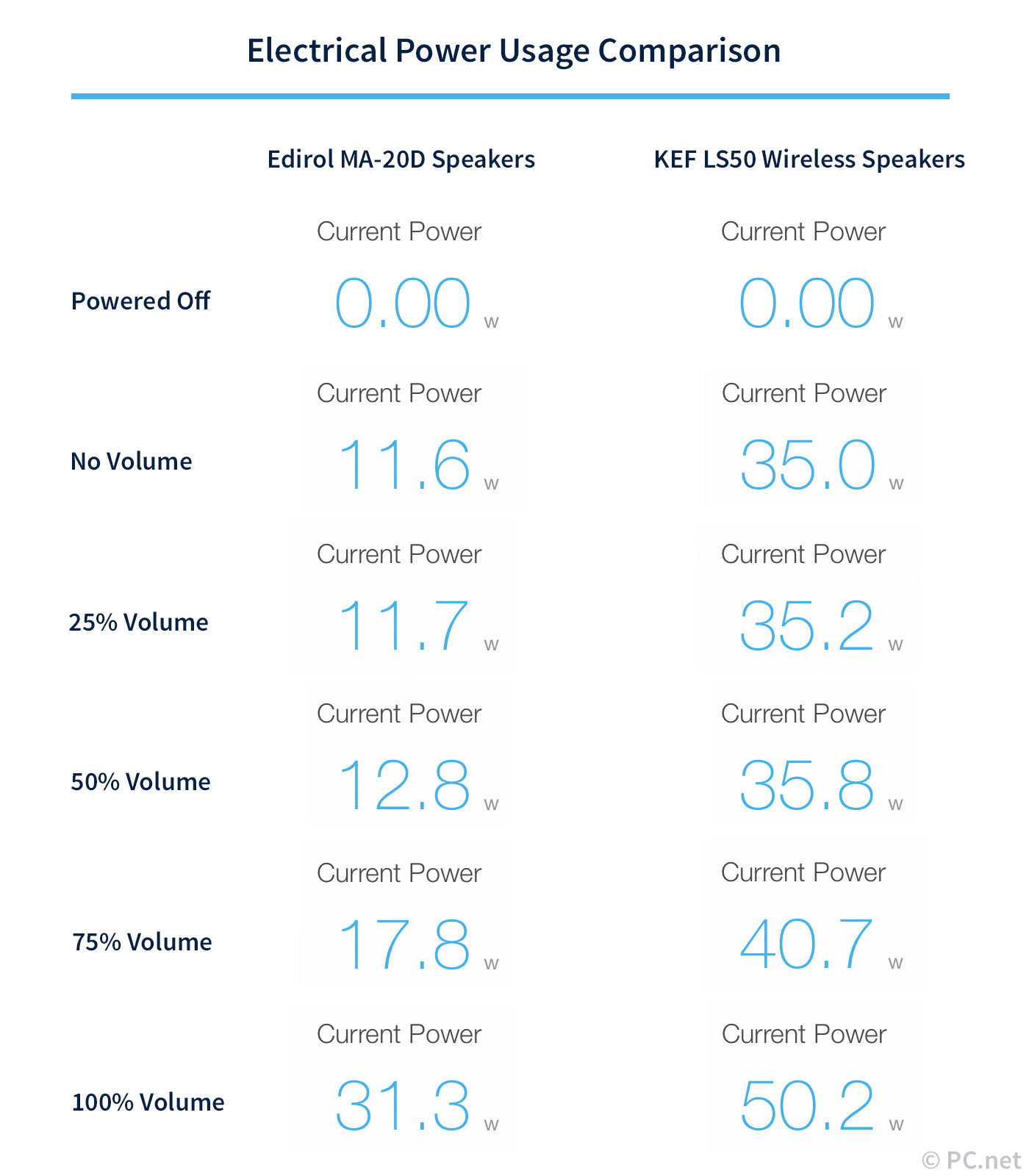Monitor Your Energy Usage
June 2019 — Tip of the Month
If you're like most people, you only glance at your electric bill each month instead of looking at the details. But what if you're wasting electricity each month and you don't even know it?
Do you know how much electricity your TV and cable box use? What about the appliances in your kitchen, or even the small clock radio in your bedroom? Are there some devices you can unplug or turn off to save energy?
Until recently, it was difficult for the average person to monitor electrical usage without expensive electrical testing equipment. But now, Wi-Fi power monitoring devices make it easy to test and record the electrical current of any outlet.
I have a few TP-Link "smart plugs" which I use to monitor my home theater energy usage as well as a few other electronics in my house. I recently bought a pair of KEF LS50 wireless speakers to replace my Edirol MA-20D speakers and I was curious to see how much energy the new speakers used. Below are the results.
Important: In both tests, I plugged the pair of speakers into the same outlet. I set the speakers' hardware volume to 70% and I adjusted the volume output of my MacPro as shown below. I took each sample from the same moment in the same song.

The results show that when the speakers are on, but not playing music, the Edirols are more energy-efficient than the KEFs (11.6 watts vs 35.0 watts). This makes sense since they are significantly lower wattage speakers (20 vs 230 w).
As I start cranking up the volume, the exponential relationship of wattage to volume becomes clear. The wattage required to power the speakers hardly changes when the volume is below 50%, but it ramps up pretty quickly around 75% and especially at 100%.
Based on these results, if I leave my speakers on all day every day, the KEF speakers should use about three times more energy than the Edirols. Fortunately, the KEFs have an "Auto OFF" feature that turns off the speakers when they are inactive for an hour. If I use my speakers eight hours a day, the KEFs should use about the same amount of energy as my old Edirol speakers, which I typically left on all day, every day.
This is just one example of how I have used energy monitoring devices to track and manage my energy usage. Ideally, it is better to test your devices over a day or a week and measure the energy usage in killowatt hours (kWh) instead of watts (w). But taking a quick sample of the wattage used by a device is still an effective way to estimate how much energy a device is using.
 Home
Home May 2019
May 2019